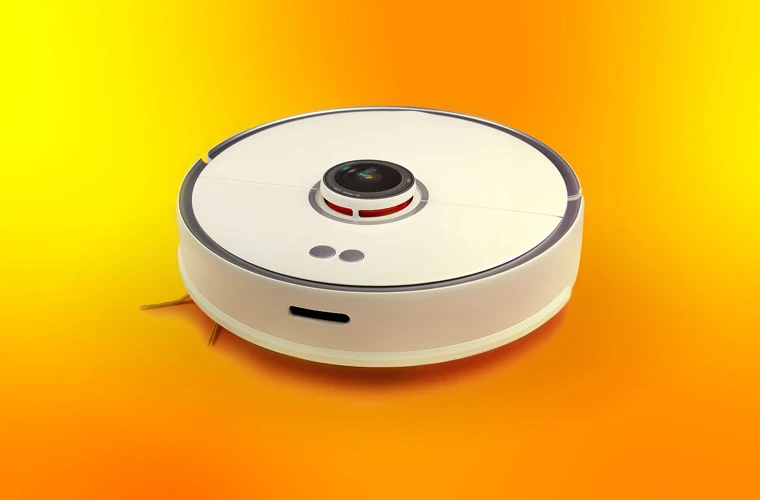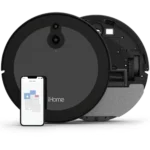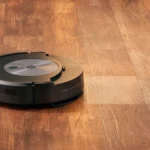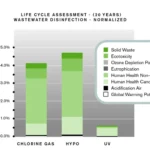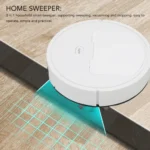When it comes to keeping our homes clean, we all want the most efficient and effective cleaning tools. One of the latest innovations in smart home technology is the integration of camera mapping in vacuum cleaners. If you’re wondering how camera mapping in smart vacuum cleaners can make cleaning easier, more precise, and more customizable, you’re not alone. In this article, we’ll explore the benefits of this cutting-edge technology and compare it to other navigation methods. We’ll also take a glimpse into the future of smart vacuum cleaners with camera mapping and discuss how it could integrate with AI technology and smart home systems. So, let’s dive in and discover how this innovative technology is revolutionizing the way we clean our homes.
What is Camera Mapping in Smart Vacuum Cleaners?

Have you ever wondered how your smart vacuum cleaner navigates around your home effortlessly without missing a spot? The answer lies in the advanced technology of camera mapping. This cutting-edge tool allows the robot vacuum to scan its surroundings, create a map of the area, and remember it for future cleanings. By doing so, the smart vacuum can clean more efficiently and effectively than ever before. In this section, we will dive deep into the power of camera mapping and explore how it works to help your smart vacuum navigate around your house.
How Does Camera Mapping Work?
Camera mapping in smart vacuum cleaners is designed to provide an efficient and accurate cleaning process. This feature utilizes a camera embedded in the vacuum that captures images of the cleaning area. The images are then processed to create a map of the environment, allowing the vacuum cleaner to navigate effectively through the space.
Camera mapping uses a series of algorithms to analyze the images captured by the camera to form a detailed map of the cleaning area. The camera captures multiple images of the environment and sends the images to the vacuum’s processor for analysis. The processor combines these images to get a comprehensive view of the cleaning environment.
Once the map of the environment is created, the vacuum uses this map to navigate through the space. The vacuum can detect obstacles, furniture, and other objects in its path and avoid them, making the cleaning process more efficient. The map created by the camera mapping feature is constantly updated to ensure that the vacuum has an accurate understanding of the cleaning area.
In addition to navigation and obstacle avoidance, camera mapping provides other features such as customized cleaning schedules, map memory, and interactive cleaning reports. These features are made possible by the detailed map of the cleaning environment created by the camera mapping feature.
Camera mapping is a powerful technology that enables smart vacuums to navigate their environment with precision and efficiency. It provides a range of benefits that make cleaning easier and more convenient. If you’re interested in learning more about camera mapping and how it works, check out our article on What is Camera Mapping in Smart Vacuum Cleaners.
Why is Camera Mapping important in Smart Vacuum Cleaners?
Camera mapping is essential in ensuring efficient and precise cleaning in smart vacuum cleaners. Unlike other navigation technologies that rely on pre-defined routes or random patterns, camera mapping allows the device to produce accurate maps of the rooms to be cleaned. This technology enables the device to create a map of the room, detect obstacles, and navigate around them smoothly.
One of the reasons why camera mapping is so important in smart vacuum cleaners is that it eliminates the need for physical markers or navigational aids. The device can quickly and accurately map out the room and clean every corner of the space without getting stuck on objects or furniture. It saves time and reduces maintenance costs and eliminates the risk of the device getting bumped or damaged.
Another reason why camera mapping is crucial in smart vacuum cleaners is that it allows for customized cleaning schedules. The device can map and store the layout of the rooms, remember the areas that require more attention, and schedule cleaning times based on the preferences of the user. The ability to schedule customized cleaning schedules ensures that the device addresses the cleaning needs of the home, reducing the need for manual cleaning.
Additionally, camera mapping is useful because of the map memory feature. This feature saves a map of the room that the device previously cleaned, which it can then use to navigate the same room during subsequent cleaning sessions. This feature ensures that the device does not clean areas that it already cleaned. As a result, it saves time, and the device can focus on cleaning the dirty areas more often.
Finally, camera mapping allows for the creation of interactive cleaning reports that detail information such as the area cleaned and the duration of the cleaning process. This feature makes it convenient for homeowners to keep track of the cleaning process and determine whether the device requires more efficient operation or maintenance.
Overall, camera mapping is vital in ensuring that smart vacuum cleaners operate effectively and efficiently. With the ability to create accurate maps, customized schedules, memory features, and interactive reports, camera mapping technology has revolutionized the way we clean our homes. As such, the top smart vacuum cleaners in the market leverage this technology to provide highly efficient cleaning solutions.
The Benefits of Camera Mapping
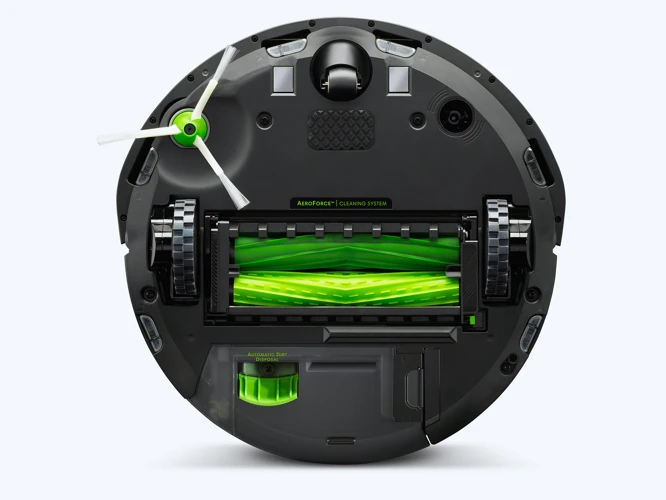
In today’s advanced and tech-savvy world, the demand for smart home appliances is growing rapidly. One such appliance, which is gaining popularity, is the smart vacuum cleaner. With features like camera mapping, smart vacuums are revolutionizing the way homes are cleaned. Using this technology, the device can map and navigate the space with precision. Camera mapping offers numerous benefits that make smart vacuums a great addition to any home. From an efficient cleaning process to interactive cleaning reports, camera mapping ensures a thorough clean every time. Let’s explore the benefits of camera mapping in smart vacuums in detail.
Efficient Cleaning Process
Camera mapping in smart vacuum cleaners allows for an efficient cleaning process. With the help of the camera, the vacuum cleaner can create a detailed map of the room, allowing it to clean in a systematic and organized manner. This means that the vacuum cleaner won’t waste time going over the same spots multiple times, and will instead move on to the next area that needs cleaning.
The camera mapping feature allows the vacuum cleaner to detect obstacles and navigate around them, avoiding collisions and getting stuck in tight spaces. The precise navigation also helps the vacuum cleaner to cover every inch of the room, even hard-to-reach areas.
To illustrate the difference between camera mapping and other navigation methods, let’s take a look at a comparison table:
| Navigation Method | Efficiency | Precision | Customization |
|---|---|---|---|
| Random Navigation | Low | Low | Not available |
| Boundary Markers | Medium | Medium | Limited |
| Laser Navigation | High | High | Not available |
| Camera Mapping | High | High | Available |
As seen in the table, camera mapping in smart vacuum cleaners provides the highest level of efficiency, precision, and customization compared to other navigation methods, such as random navigation, boundary markers, and laser navigation.
Camera mapping is an essential feature for smart vacuum cleaners, providing a more productive and thorough cleaning process. For more information about how camera mapping works, check out our article on “How Camera Mapping Helps Smart Vacuum Cleaners Navigate“. If you’re looking to purchase a smart vacuum cleaner with camera mapping, take a look at our list of “Top 5 Smart Vacuum Cleaners with Camera Mapping“. If you’re experiencing some issues with camera mapping, check out our troubleshooting guide on “How to Troubleshoot Camera Mapping Issues in Smart Vacuum Cleaners“.
Precise Navigation
Picture this scenario: you’ve just settled down for a cozy night in with your favorite movie, and your robotic vacuum cleaner decides to start its cleaning cycle. You anticipate the noise and movement that come with the job, but to your surprise, the vacuum glides silently and efficiently around the room, avoiding obstacles with ease. How is this possible? The answer lies in the precise navigation capabilities of smart vacuum cleaners with camera mapping – a revolutionary technology that is changing the way we clean our homes.
With camera mapping, a smart vacuum cleaner is equipped with cameras that capture detailed images of its surroundings. These images are then processed by a powerful onboard computer, which uses advanced algorithms to create a 3D map of the cleaning area. The map is constantly updated as the vacuum cleaner moves around, allowing for precise navigation even in complex environments.
The benefits of precise navigation are numerous. For one, it ensures that every inch of your home is thoroughly cleaned. The vacuum cleaner can detect even the smallest dirt or debris and navigate precisely to that spot to remove it. This means that you can trust your smart vacuum to provide a deep clean without missing any areas, even in hard-to-reach or cluttered spaces.
Precise navigation allows smart vacuum cleaners with camera mapping to avoid obstacles with ease. The 3D map created by the onboard computer is highly detailed, allowing the vacuum cleaner to detect and navigate around obstacles with ease. This includes furniture, rugs, and even pets – the vacuum cleaner can maneuver around any obstacles in its path to ensure a thorough clean.
The precise navigation capabilities of smart vacuum cleaners with camera mapping ensure that your home is cleaned quickly, efficiently, and thoroughly. By using highly detailed 3D maps of your cleaning area, these devices can navigate even complex environments with ease, avoiding obstacles and thoroughly cleaning every inch of your home. With this technology, you can trust that your smart vacuum cleaner will provide a deeper, more efficient clean than traditional models, saving you both time and effort in the process.
| Precise Navigation Benefits: |
| – Thoroughly clean every inch of your home |
| – Navigate around obstacles with ease |
| – Efficiently remove even the smallest dirt or debris |
Customized Cleaning Schedules
With camera mapping, smart vacuum cleaners are able to perform customized cleaning schedules that fit your unique household needs. These cleaning schedules can be tailored to your cleaning preferences, thus ensuring a clean and healthy living space.
Here are some benefits of customized cleaning schedules:
- Flexibility: With customized cleaning schedules, you can schedule your vacuum cleaner to clean at different times of the day or week according to your lifestyle. You can set it to clean when you’re at work, away on vacation or overnight while you’re asleep. This means that you can come back home to a clean and refreshing living space, without having to lift a finger.
- Convenience: Customized cleaning schedules provide an added convenience factor. Instead of manually operating your vacuum cleaner, you can sit back and relax while it does the work for you. This gives you more time to focus on other important tasks, or just enjoy your leisure time.
- Cleanliness: By incorporating a customized cleaning schedule, you can ensure that your floors are always clean and free of dirt, dust and debris. This is particularly useful for those who suffer from allergies or respiratory issues, as a clean living space can help improve air quality and overall well-being.
The ability to create customized cleaning schedules is made possible by the advanced mapping technology in smart vacuums. It allows the vacuum to identify and avoid obstacles, plan efficient cleaning routes, and maintain an accurate map of your home’s layout. This feature not only saves you time and effort, but also ensures that your floors are cleaned thoroughly and effectively.
You can control and adjust the cleaning schedule remotely using a smartphone app, making the process even more convenient. You can easily set up a cleaning schedule for different rooms, areas, or levels of your house, and the vacuum will automatically follow the instructions.
Customized cleaning schedules are a valuable feature of smart vacuums made possible by camera mapping technology. They provide ample benefits including flexibility, convenience, and cleanliness, thus making life easier for busy households.
Map Memory Feature
The Map Memory feature of smart vacuum cleaners is an incredible innovation that allows them to remember the floor plan of your house. As a result, the device can clean your house more efficiently and without bumping into furniture or other objects.
This feature captures the layout of your home and creates a map in its database for future use. This way, whenever the vacuum cleaner cleans your home again, it can refer to the map memory and clean the rooms quickly and accurately.
The Map Memory feature relies on the camera mapping system, which takes a 360-degree view of your home and saves an accurate representation of your home’s layout in its database. Through this high-precision memory feature, the smart vacuum cleaner can perform cleaning tasks more effectively and accurately, covering every nook and corner of your house.
It is also worth mentioning that this feature saves you time from having to reset the device every time you clean your home. The Map Memory feature enables your smart vacuum cleaner to navigate your home autonomously, and you can even set specific cleaning preferences, such as cleaning a particular room more often than others.
In addition to saving valuable time, this feature also provides peace of mind knowing that your smart vacuum cleaner can navigate your home on its own, without any incidents. The Map Memory feature ensures that the cleaner does not miss any spots, collect dirt and debris thoroughly, and return to its docking station at ease.
The Map Memory feature in smart vacuum cleaners is an invaluable tool that provides homeowners with a more efficient cleaning process, saving them time and stress. By maintaining a map of your home in its database and remembering your cleaning preferences, the smart vacuum cleaner can make your life easier, and your home cleaner.
| Pros | Cons |
|---|---|
| High-precision | Additional cost |
| Saves time and stress | Requires well-lit rooms |
| Covers every nook and corner of your house | May capture private areas inadvertently |
The Map Memory feature offers a multitude of benefits that outweigh its cons. We highly recommend that you consider investing in a smart vacuum cleaner with this feature for a more efficient and effective cleaning process.
Interactive Cleaning Reports
Once the cleaning cycle is complete, the smart vacuum cleaner with camera mapping technology generates a detailed cleaning report. This feature is one of the innovations that sets camera mapping apart from other navigation methods. The interactive cleaning report is designed to provide users with a detailed breakdown of the cleaning process.
The generated report includes a table that highlights important aspects of the cleaning cycle, such as the duration of the cleaning cycle, the distance covered by the smart vacuum cleaner, the number of obstacles encountered, and the percentage of the floor that was covered during the cycle.
This table is particularly informative, as it helps homeowners understand how the smart vacuum cleaner with camera mapping technology navigated through their homes, which areas required additional cleaning, which part of the floor was left uncovered, and how much time the cleaning process took. With this detailed information in hand, homeowners can make informed decisions on how to improve the cleaning process.
Additionally, the smart vacuum cleaner with camera mapping technology offers a history of each cleaning cycle. This history allows the user to track any changes in the cleaning process and identify areas for improvement. By comparing the cleaning reports from each cycle, homeowners can determine whether the cleaning process needs to be refined or not.
Finally, the interactive cleaning report provides suggestions for improving the cleaning process. These suggestions can include recommendations for cleaning certain areas of the house more often or targeting specific areas that were neglected during the cleaning cycle.
The interactive cleaning report is a powerful feature that helps homeowners better understand how their smart vacuum cleaner with camera mapping technology operates. The report provides valuable insights and recommendations that can improve the efficiency and effectiveness of the cleaning process.
Comparison with Other Navigation Methods
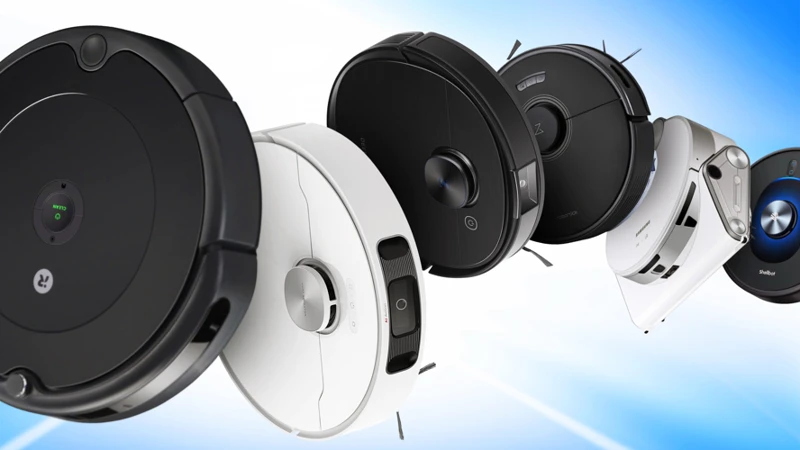
As smart vacuum cleaners continue to evolve, there are various methods manufacturers use to help the device navigate through your home during the cleaning process. While some rely on random navigation or boundary markers, others utilize laser navigation technology. However, one of the most promising navigation methods available in smart vacuums is the use of camera mapping. With its many benefits, it’s worth taking a closer look at how camera mapping compares to other navigation methods in terms of efficiency, precision, and customization. Let’s explore this further.
Random Navigation
One of the alternative navigation methods used in smart vacuum cleaners is random navigation. Rather than using cameras or other sensors to map out a room before cleaning, random navigation cleaners simply move around the room in a haphazard pattern, hoping to cover all areas eventually. While this method is certainly better than no cleaning at all, it is not nearly as efficient as camera mapping.
The drawbacks of random navigation include:
- Inefficiency: The random movement of the vacuum cleaner means that it may spend more time cleaning certain areas of the room while completely missing others.
- Incomplete cleaning: Because it relies on chance, random navigation may not be able to cover every single corner of the room.
- Increased wear and tear: The more time the vacuum spends running around aimlessly, the faster its motor will wear out – leading to the need for more frequent repairs or replacements.
While random navigation may be cheaper to implement than camera mapping, the tradeoff comes in the form of reduced efficiency and cleaning quality. For those who want a truly spotless clean without having to worry about missed spots or random breakdowns, camera mapping is the clear winner.
Boundary Markers
A popular method for navigation in some smart vacuum cleaners is through the use of boundary markers. These markers are physical strips that are placed around the perimeter of the cleaning area to set boundaries for the machine. While this method can be effective in keeping the vacuum cleaner within a certain area, it lacks the advanced capabilities of camera mapping.
The limitations of boundary markers
While boundary markers can be effective in containing a smart vacuum cleaner within a certain area, there are several limitations to this method. Firstly, these markers can be cumbersome to install and may not be aesthetically pleasing in a home setting. Secondly, they do not offer any customization options for the cleaning process, unlike the precise mapping capabilities offered by camera mapping.
Lack of customization options
Boundary markers also lack the capability to customize cleaning schedules, making them less efficient than smart vacuum cleaners with camera mapping. With camera mapping, the user can customize the cleaning process based on the specific layout of their home, ensuring that the machine navigates areas that require more attention. This ensures more efficient and thorough cleaning.
A less advanced technology
Boundary markers rely on a less advanced technology compared to camera mapping. While boundary markers simply provide a set boundary for the machine, camera mapping offers far more capabilities, including the ability to map an entire area, set precise cleaning paths, and remember the layout of the house for future cleaning.
While boundary markers are a popular choice in some smart vacuum cleaners, they lack the advanced capabilities offered by camera mapping. With camera mapping, the cleaning process is more efficient, customized, and thorough, making it the superior choice for those seeking a smart cleaning solution.
Laser Navigation
Laser navigation is another method used by smart vacuum cleaners to navigate and map a room. Instead of using optical sensors, laser navigation uses lasers to gather information about the surroundings. This enables the robot to create a detailed map of the area, and accurately navigate around obstacles.
How Does Laser Navigation Work?
Laser navigation works by emitting lasers that bounce off of objects in the room. The robot then uses the information collected from the lasers to calculate the distance between itself and objects in the environment. As the robot moves around the room, the lasers continue to gather data, creating a detailed map of the area.
Advantages of Laser Navigation
Laser navigation has some advantages over other navigation methods. Firstly, laser navigation enables the robot to create a more detailed and accurate map of the area. This means that the robot is less likely to miss spots or get lost in unfamiliar areas. Additionally, laser navigation enables the robot to work in dark environments, as the lasers can still detect objects even in low-light conditions.
Disadvantages of Laser Navigation
However, laser navigation also has some disadvantages. Firstly, robots that use laser navigation tend to be more expensive than those that use other methods. Additionally, laser navigation requires more power than other methods, which can impact the battery life of the robot.
| Advantages | Disadvantages |
|---|---|
| Accurate mapping of the area | Expensive compared to other methods |
| Works in dark environments | Requires more power, which can impact battery life |
Which Navigation Method is Best?
Ultimately, the best navigation method for a smart vacuum cleaner will depend on the specific needs of the user. Some people may prioritize accuracy and precision, while others may prioritize battery life and cost. However, one thing is clear: with the continued development of technology, the future of smart vacuum cleaners is incredibly promising.
Future of Smart Vacuum Cleaners with Camera Mapping
As technology continues to advance and integrate into various aspects of our lives, the future of smart vacuum cleaners with camera mapping is becoming increasingly exciting. With the ability to map out the environment and implement precision-guided cleaning, the potential for these devices goes far beyond simple household chores. The possibilities for integration with other technologies, such as smart home systems and the implementation of AI, make for a promising future for these innovative devices. Let’s explore what the future holds for smart vacuum cleaners with camera mapping technology.
Integration with Smart Home Systems
As smart home technology advances, so do the capabilities of smart vacuum cleaners. One of the most exciting developments is the integration of camera mapping with smart home systems.
Benefits of Integration with Smart Home Systems
Integrating camera mapping technology with your smart home system allows for even greater convenience and control over your cleaning process. Through your smart home app, you can easily schedule and monitor your vacuum cleaner’s cleaning process, as well as access the map memory feature and cleaning reports.
Additionally, smart home integration enables voice control through systems such as Amazon Alexa and Google Assistant, giving users the ability to control their vacuum cleaners with simple voice commands.
Examples of Smart Home Integration
Several leading smart vacuum cleaner brands have already integrated their products with smart home systems, including:
| Brand | Smart Home System Integration |
|---|---|
| iRobot Roomba | Amazon Alexa, Google Assistant, IFTTT |
| Ecovacs Deebot | Amazon Alexa, Google Assistant, SmartThings |
| Shark Ion | Amazon Alexa, Google Assistant, Shark Clean App |
Through these integrations, users can easily control their smart vacuum cleaners through their preferred smart home system, creating an even more seamless and effortless cleaning experience.
The Future of Integration
As more and more households become smart home-enabled, it’s likely that smart vacuum cleaners will become even more integrated with these systems. Additionally, as AI technology continues to advance, we may see even more advanced features and capabilities for smart home-enabled vacuum cleaners.
The integration of camera mapping technology with smart home systems allows for a greater level of control and convenience in the cleaning process. With the ability to schedule and monitor cleaning, access map memory and cleaning reports, and control via voice command, smart home-enabled vacuum cleaners provide an exceptional cleaning experience.
AI Technology Implementation
As technology continues to advance, the potential benefits of integrating AI technology into smart vacuum cleaners with camera mapping are numerous. With the use of AI, these cleaners can become even more efficient and effective in providing top-tier cleaning results.
One potential implementation of AI technology in smart vacuum cleaners is the ability to learn and remember the layout and furnishing of a home. With this feature, users can expect a personalized cleaning experience which takes into account their unique cleaning needs. Vacuum cleaners with AI technology can also analyze data collected from past cleaning sessions to adapt to any changes in the home environment.
Another benefit of AI implementation is real-time monitoring of the cleaning process. Smart vacuum cleaners with AI can be programmed to detect and respond to changes in the environment, such as new obstacles or changes in lighting conditions, ensuring a thorough and accurate cleaning session.
AI technology can also assist in detecting and tracking specific areas of the home that require frequent cleaning, such as high-traffic areas or pet zones. This feature is especially helpful for homeowners with pets or those who experience high foot traffic in certain areas of the home.
AI implementation in smart vacuum cleaners with camera mapping has the potential to revolutionize the cleaning industry. The following table summarizes the potential benefits of AI technology implementation:
| Benefits of AI Technology Implementation |
|---|
| Personalized cleaning experience |
| Adaptation to changes in home environment |
| Real-time monitoring of cleaning process |
| More efficient cleaning of high-traffic areas |
As AI technology becomes more advanced, we can expect to see even more enhancements added to smart vacuum cleaners with camera mapping, making cleaning a more effortless and hassle-free task for homeowners.
Conclusion
In conclusion, it is clear that Camera Mapping is an integral part of the future of Smart Vacuum Cleaners. Its sophisticated technology and capabilities make the cleaning process more efficient, precise, and autonomous. The benefits of Camera Mapping, including customized cleaning schedules, map memory feature, and interactive cleaning reports, are unmatched by other navigation methods.
The integration of Camera Mapping with Smart Home Systems and AI technology takes Smart Vacuum Cleaners to a whole new level. With voice control and remote access to the cleaning routine, homeowners can sit back and relax while their smart vacuum cleaner takes care of the floors.
It is evident that Camera Mapping is the future of cleaning technology, and it is exciting to see what advancements will be made in the near future. With its ability to provide a more effective cleaning process, Smart Vacuum Cleaners with Camera Mapping will continue to gain popularity in households around the world.
As technology continues to advance and evolve, it is vital to stay up-to-date with these advancements to enhance our daily lives. Smart Vacuum Cleaners with Camera Mapping are just one example of how technology is making our lives easier and more streamlined. Invest in a Smart Vacuum Cleaner with Camera Mapping today and experience the future of cleaning technology firsthand.
Frequently Asked Questions
What are the benefits of camera mapping versus other navigation methods?
Camera mapping allows for more efficient cleaning, precise navigation, customized cleaning schedules, map memory feature, and interactive cleaning reports. It also outperforms other navigation methods such as random navigation, boundary markers, and laser navigation.
How does camera mapping work?
Camera mapping works by using a built-in camera to scan and create a digital map of the cleaning area, which is then used to navigate the smart vacuum cleaner throughout the space.
Why is camera mapping important in smart vacuum cleaners?
Camera mapping is essential in smart vacuum cleaners because it allows for more efficient and precise cleaning, customized cleaning schedules, and interactive cleaning reports. It also enhances the cleaner’s navigation capabilities by utilizing real-time mapping technology.
What is the map memory feature in smart vacuum cleaners with camera mapping?
The map memory feature in smart vacuum cleaners with camera mapping allows the cleaner to store and recall multiple maps of the cleaning area, enabling it to navigate and clean multiple spaces with ease.
What are interactive cleaning reports in smart vacuum cleaners with camera mapping?
Interactive cleaning reports are a feature of smart vacuum cleaners with camera mapping that provide detailed information about the cleaning process, such as the areas cleaned, time spent cleaning, and the duration of the cleaning cycle.
What is laser navigation in smart vacuum cleaners?
Laser navigation is a technology used in some smart vacuum cleaners that utilizes lasers to map and navigate through the cleaning space. It is less accurate than camera mapping and may require additional boundary markers.
What are boundary markers in smart vacuum cleaners?
Boundary markers are physical barriers that can be placed around cleaning areas to prevent smart vacuum cleaners from navigating outside of designated areas. This navigation method is less efficient than camera mapping.
What is random navigation in smart vacuum cleaners?
Random navigation is a navigation method used by some smart vacuum cleaners that involves randomly navigating around the cleaning area without using any mapping or navigation technology. This method is less efficient than camera mapping.
How can smart vacuum cleaners with camera mapping be integrated with smart home systems?
Smart vacuum cleaners with camera mapping can be integrated with smart home systems by using Wi-Fi, Bluetooth, or other wireless technologies. This integration allows for remote control, scheduling, and monitoring of the cleaner.
How can AI technology be implemented in smart vacuum cleaners with camera mapping?
AI technology can be implemented in smart vacuum cleaners with camera mapping by using machine learning algorithms to enhance the cleaner’s performance and capabilities, such as improving navigation, identifying obstacles, and optimizing cleaning patterns.
